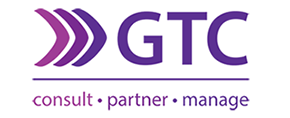Local Equity Market – 3rd Quarter September 2020
The JSE/FTSE All Share performance for the quarter was somewhat pedestrian but nevertheless remained positive returning 0.67% with the JSE/FTSE SWIX delivering -0.33%. Covid-19 escalated during the quarter but the authorities have to be congratulated on the manner in which the pandemic was managed. Most market sectors delivered lackluster or negative performance as both political and economic uncertainty continued to undermine investor confidence. Overall market performance was fortunately supported by rallies in both gold and platinum counters which both attracted increased demand.
The Resources sector returned 5.71% for the quarter and was by far the best performer. Financials managed to muster a positive return of 0.47% despite having come under repeated selling pressure. The Industrial sector eased as Naspers sold off in line with global tech stocks delivering a negative – 2.29% for the quarter. The Property sector came in for a hammering as work from home became the accepted norm and declined a negative -14.14%.
South Africa lost 2.2 million jobs in Q2 due to the lockdown. This has sent unemployment, as per the extended definition, to over 40%. The official jobless rate fell from 30.1% to 23.3%. This is due to the official definition excluding unemployed people who are not actively looking for a job. The extended definition, which includes these people, rose from 39.7% to 42%. MMost worrying is that unemployment in the age group 15-24 is standing at over 52%. Infrastructure initiatives under consideration could be important contributors to lifting South Africa out of its current low-growth trap. An estimated R1.5 trillion is needed to fund the projects over the next decade. However, the private sector is ready to fund them as long as they are well structured and managed, that investors are compensated for the risk they are taking and that the projects ultimately have policy certainty. The key is implementation.
South Africa plans to tap the global appetite for green bonds to help fund an infrastructure programme worth as much as R2.3 trillion over the next decade. Winning over the private sector and streamlining the project-approval process will be key to the drive. In July, 62 priority projects were announced in the first stage of the programme. There is a shortage of R140 billion in phase one, and a large part of that will come from green bonds.
Concerns about the capacity of South Africa’s depleted and financially distressed construction industry to deliver the government’s massive infrastructure investment plan have been downplayed by industry analysts.
However, there are concerns about how long it will take for any of the Strategic Infrastructure Projects to be awarded, as well as corruption in the tender process.
Following the commitments made in the state-of-the-nation address in February, government has now gazetted ministerial determinations that will enable the development of more than 11.8GW of additional power generation. To give a sense of the scale of this development, South Africa currently has in the region of over 30GW of electricity available on the national grid each day.
South Africa is banking on a rejuvenation of its depressed mining industry to help counter the economic downturn brought about by the coronavirus. The need to rebuild investor confidence in the sector was identified as key to an economic recovery plan that was agreed by the government and business and labour representatives. They undertook to jointly develop a strategy within three months to target 3% of global exploration expenditure and halve the time it currently takes to secure all mining, prospecting and environmental licenses.
Finance minister Tito Mboweni has agreed the fiscus will finance SAA to the tune of R10.4bn but he insists it will be done in a “fiscally neutral way”. That means the fiscal framework, as articulated in the June supplementary budget, will remain sacrosanct and no additional debt will be taken on to finance SAA. The additional money will have to come from existing budget allocations.
The Reserve Bank’s monetary policy committee left the benchmark interest rate unchanged at 3.5% even as it revised down its forecasts for growth in an economy still navigating its way through the fallout from the coronavirus shock. The Bank revised its GDP forecasts and is now expecting the economy to shrink -8.2% in 2020, compared to the -7.3% contraction forecast in July. It now expects the economy to grow by 3.9% in 2021 and by 2.6% in 2022. Plans to nationalise the SA Reserve Bank will be shelved as the government tries to get the coronavirus-stricken economy back on track.
The Absa manufacturing business confidence index rose to 22 index points in the third quarter of 2020. This is after the sector had come to a near standstill in April 2020, which led to manufacturing business confidence collapsing to an all-time low of 6 index points in the second quarter of 2020.





